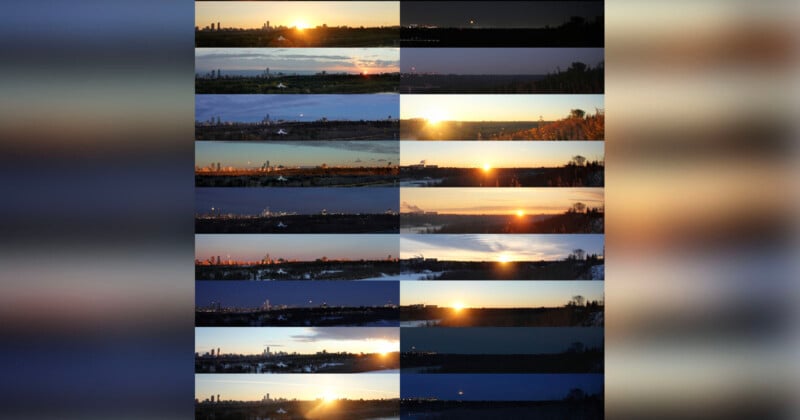
Today marks the autumnal equinox, the astronomical date when fall begins and summer ends. It’s a special date for keen skywatchers, including Luca Vanzella and Alister Ling who recently completed an ambitious photographic project charting the swing of the Sun and the Moon over one year.
For their project, Vanzella and Ling teamed up to capture 13 sunrises and 13 moonrises. Aside from being a fascinating photo project, the period that they shot it in — June 2024 to June 2025 — marked the major lunar standstill, an astronomical event that only occurs every 18.6 years.
“The Sun and full Moon can be pictured as two children at the playground swinging back and forth in opposite directions; they are far apart at the solstices, and swoosh quickly past each other in the middle at the equinoxes,” Ling tells PetaPixel over email.
“Yet the Moon’s arc is not a perfect mirror of the Sun’s; it slowly changes from wider to narrower. It’s easiest to see when you use freeze framing to compare them. 2025 was the year for the Moon’s widest swing, known as the major lunar standstill.”
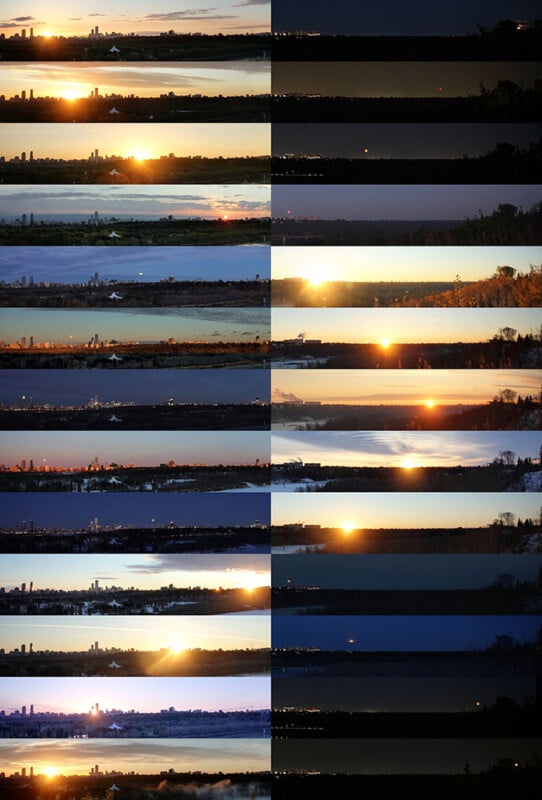
The pair shot the photos in Edmonton, Canada, selecting a spot that had plenty of open sky for the required 114-degree span of rise points. For camera equipment, the pair settled on a 10mm lens attached to Canon DSLR cameras and took two shots that could be stitched together to make a panorama.
With two photographers working on the project, it meant that holidays and responsibilities could be covered so that no celestial events were missed. But there are certain elements that cannot be controlled, no matter how many photographers are working together.
“The odds of clear skies in the mid-latitudes for 13 consecutive monthly sunrises and 13 moonrises are vanishingly small,” the pair explains. “Decades of experience confirm this. So we planned well ahead of time to capture very similar events (month and Moon position) which we could later use as proxies if the weather didn’t cooperate.”
And the weather really didn’t cooperate. Of the 13 moonrises, eight of them were clouded out, and proxies had to be used. “Of course, we also had to make some cosmetic cleanups, removing helicopter maneuvers, hot and dead pixels, and cloning out egregious construction floodlights that pulled attention away from the subject,” they add.
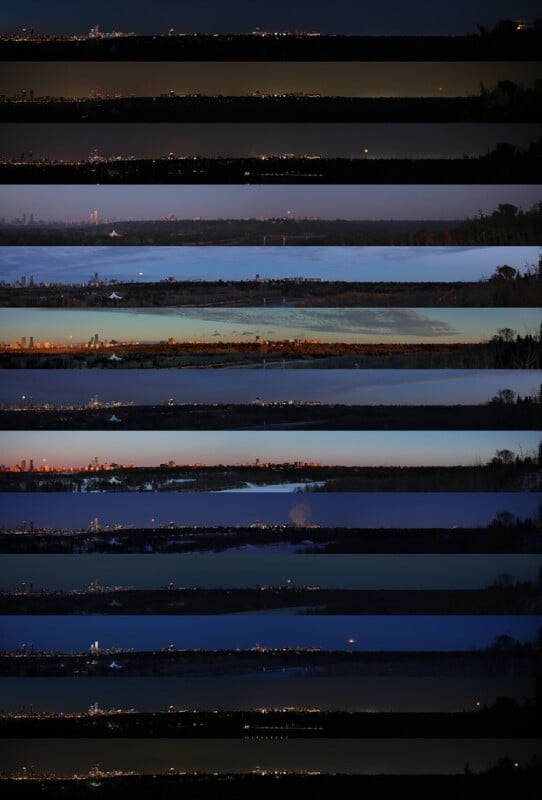
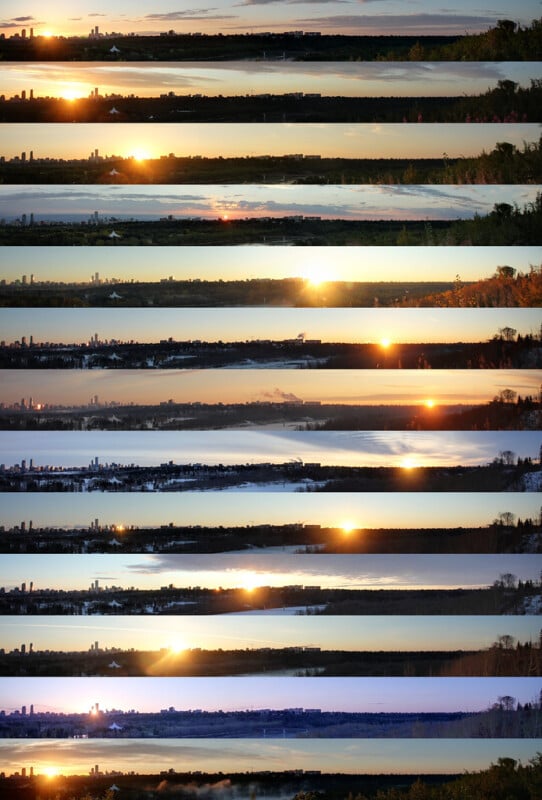
But getting 26 clean shots of the sky in Canada is no easy task, and the aim was always to show celestial movements most people are unaware of.
“Art and science are intertwined in our lives as amateur astronomers; they inspired us to create this poster of the Moon and Sun’s motions that is faithful to the skywatching experience while being educational,” adds Vanzella and Ling. “As photographers, we loved the challenge of figuring out how to shoot the ‘Major Lunar Standstill’ and present it as a thought-provoking image.”
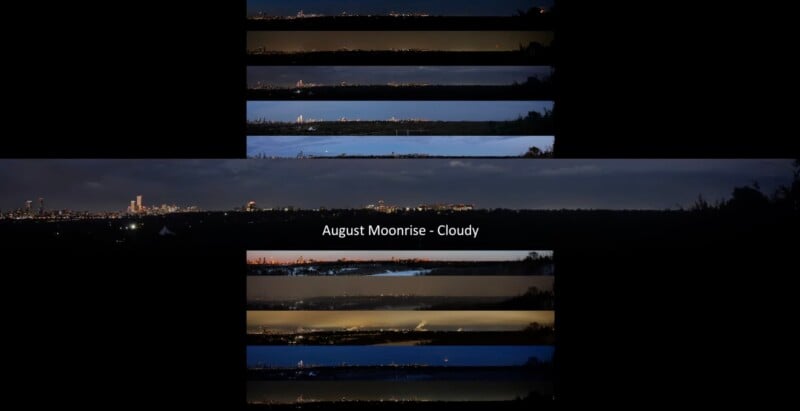

Both Vanzella and Ling belong to the Royal Astronomical Society of Canada, and photography allows them to enjoy their hobby even more. You can follow them both on Flickr: Luca Vanzella – Alister Ling.
Image credits: Photographs by Luca Vanzella and Alister Ling
Update 9/22: Updated with YouTube video.
Source link

